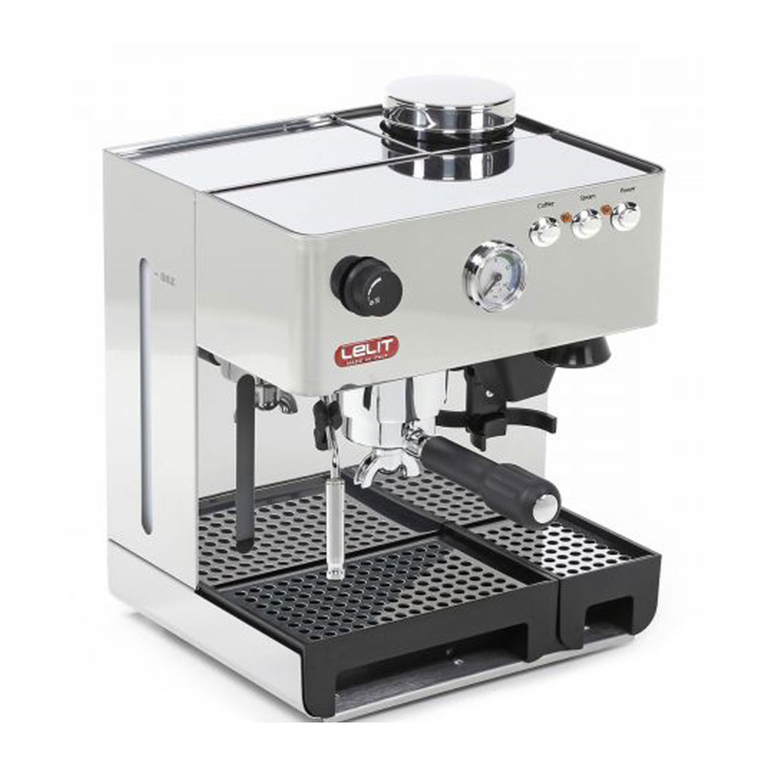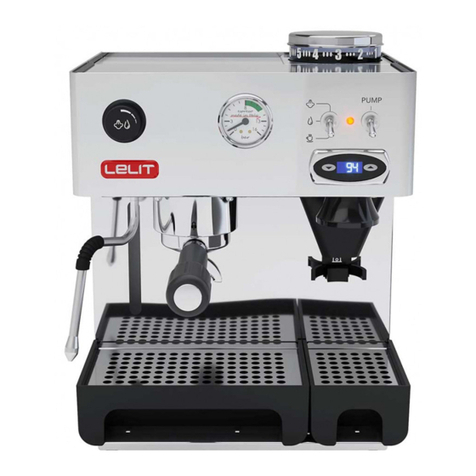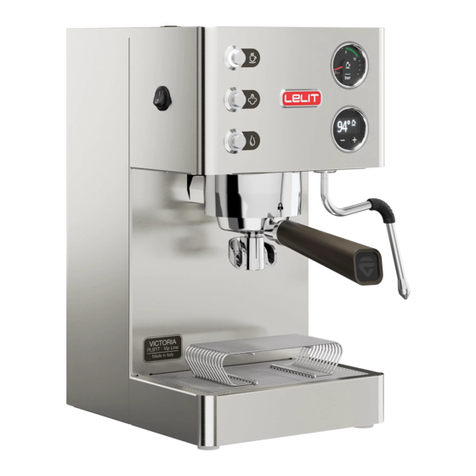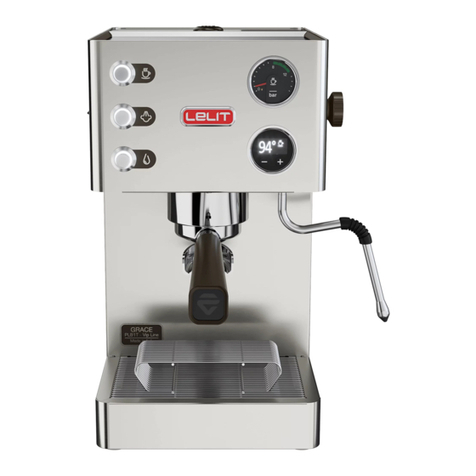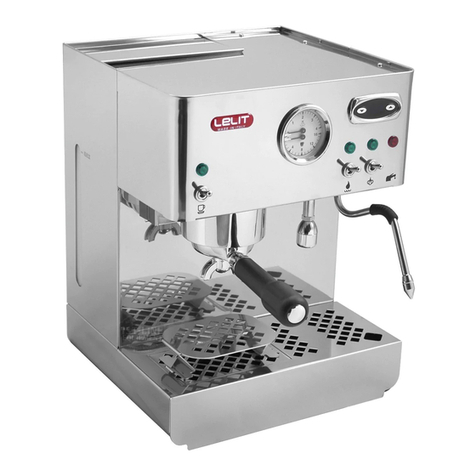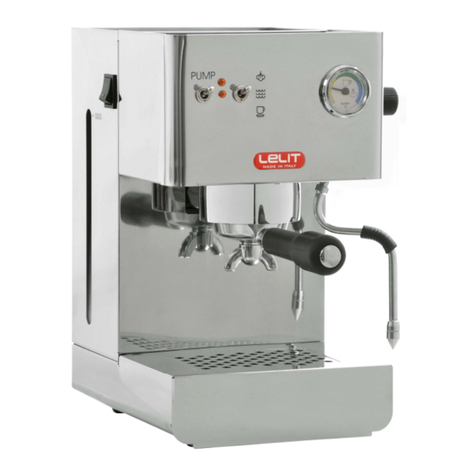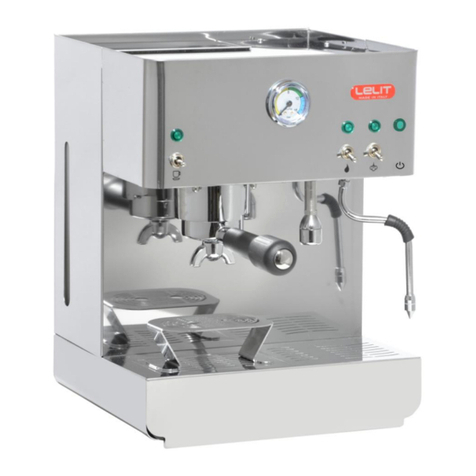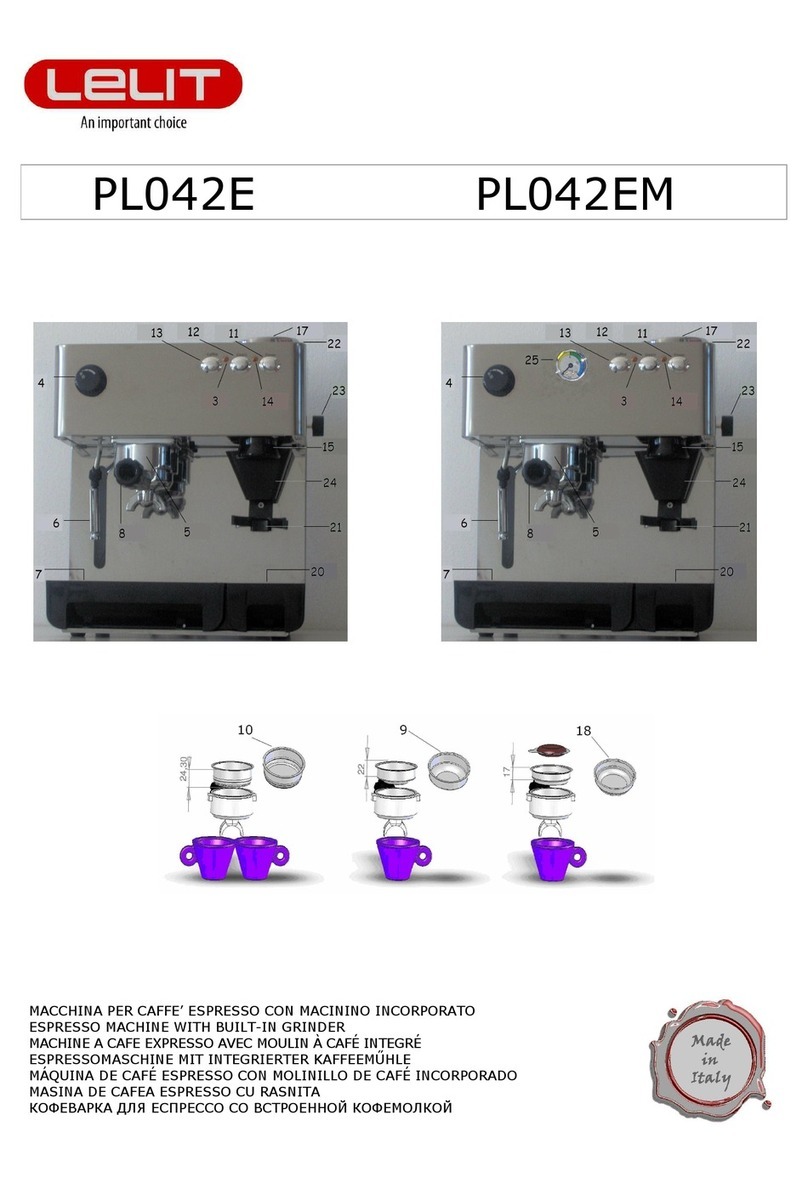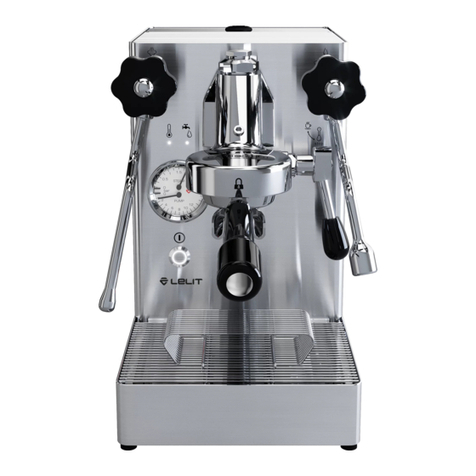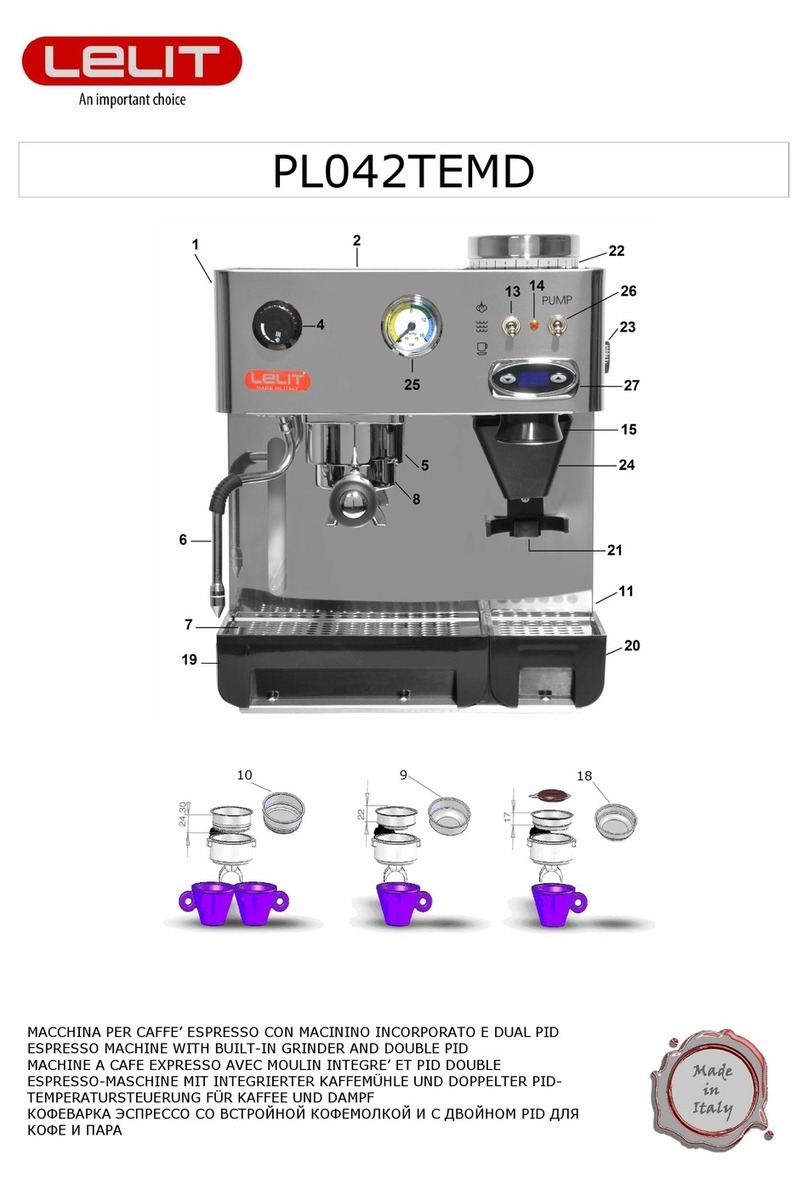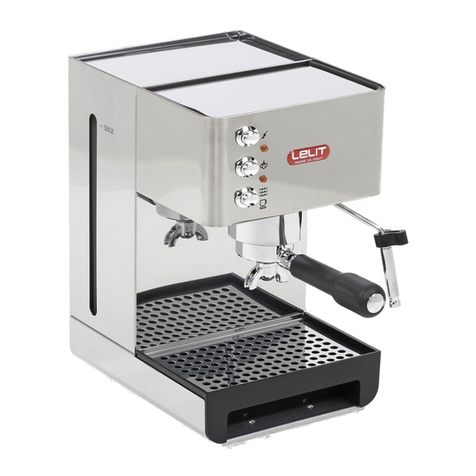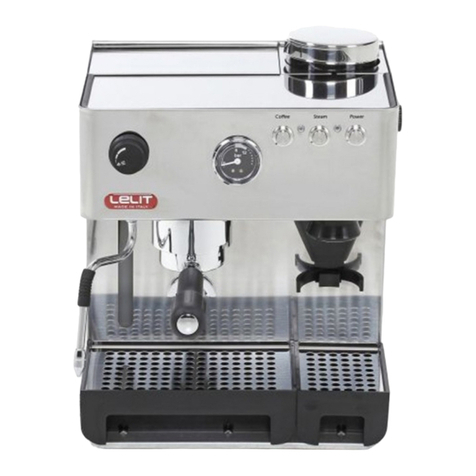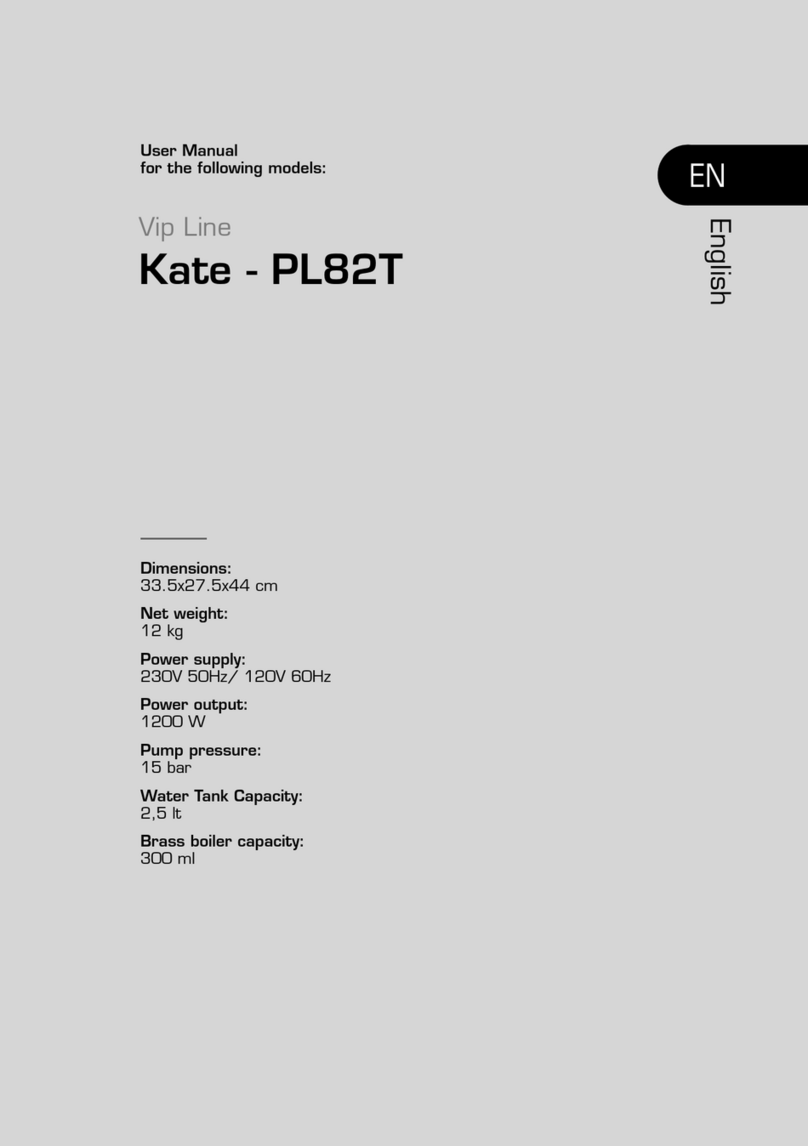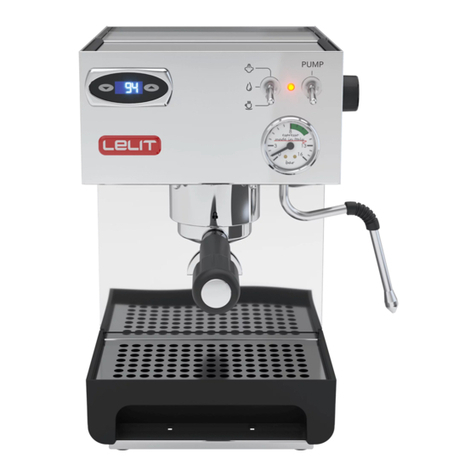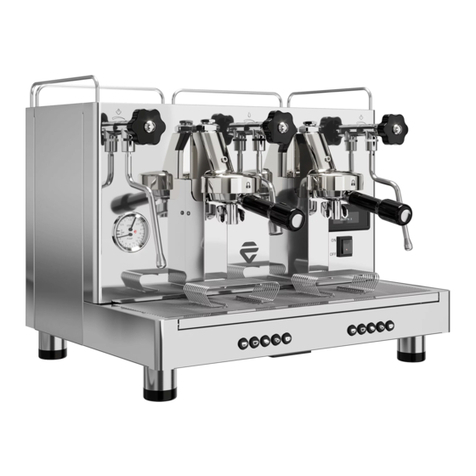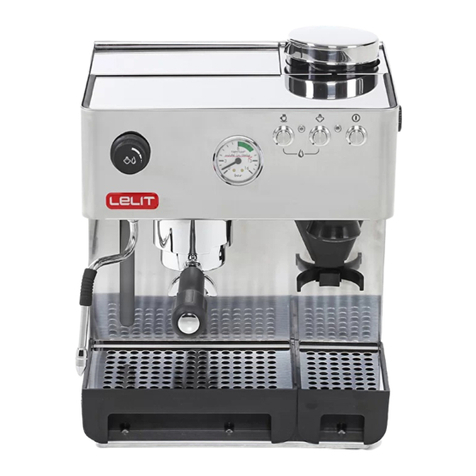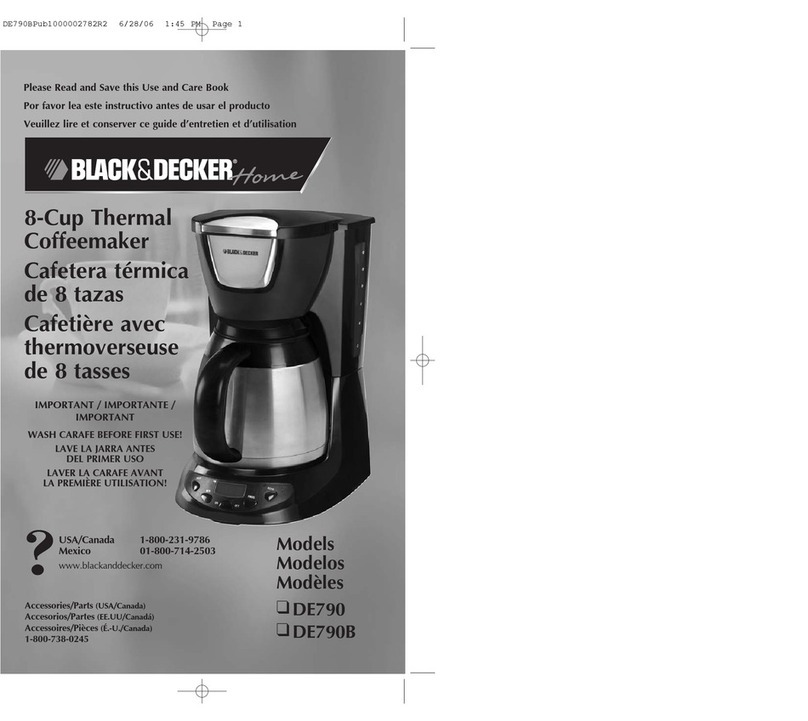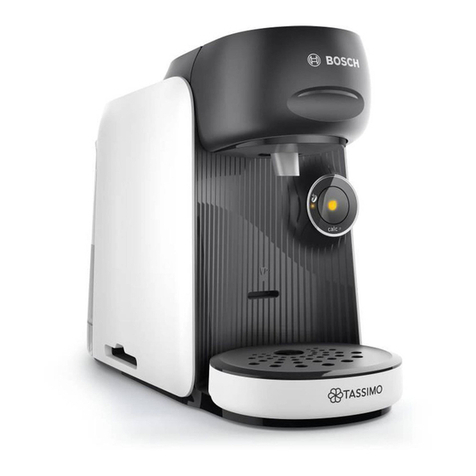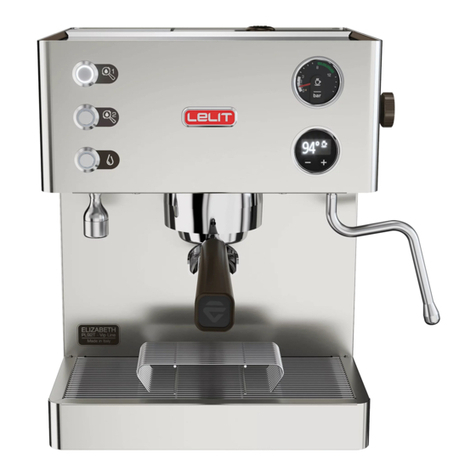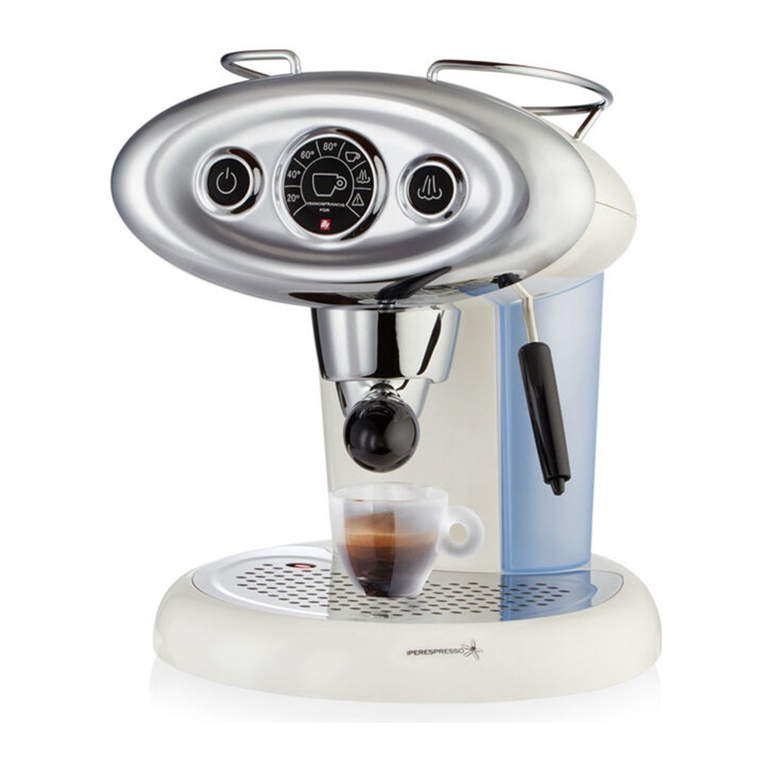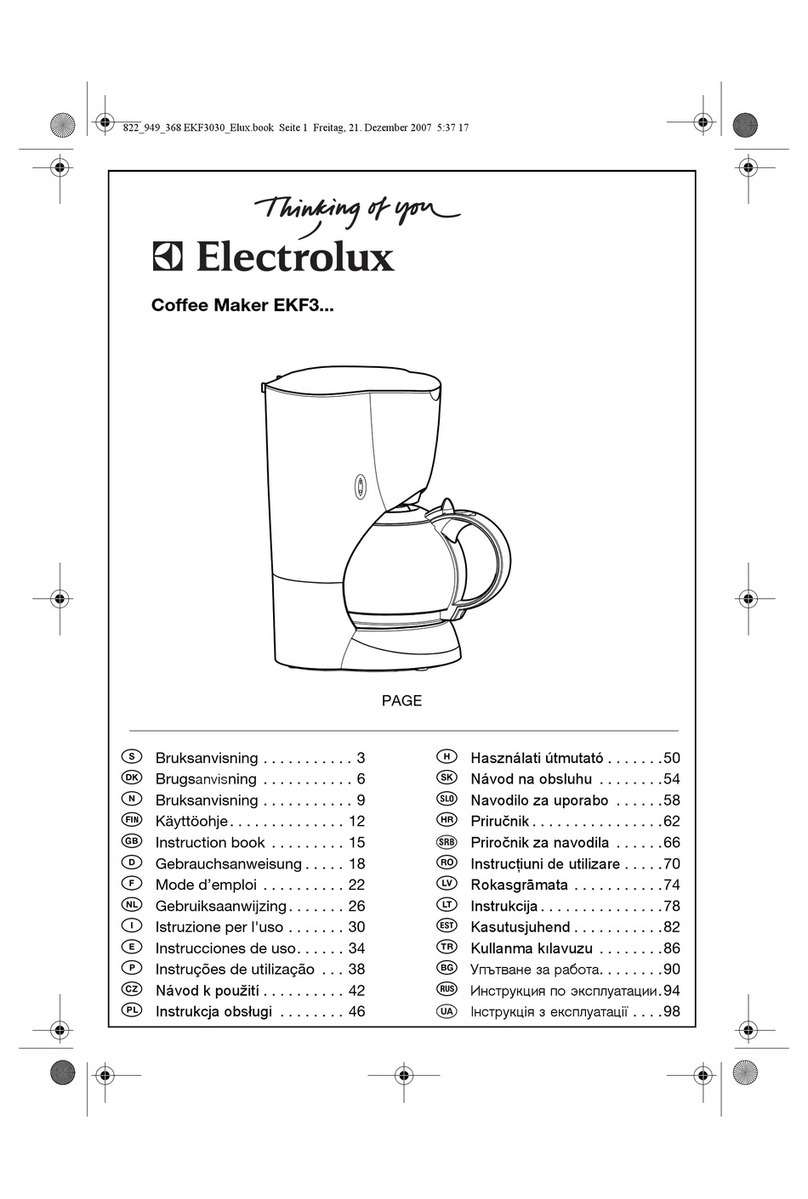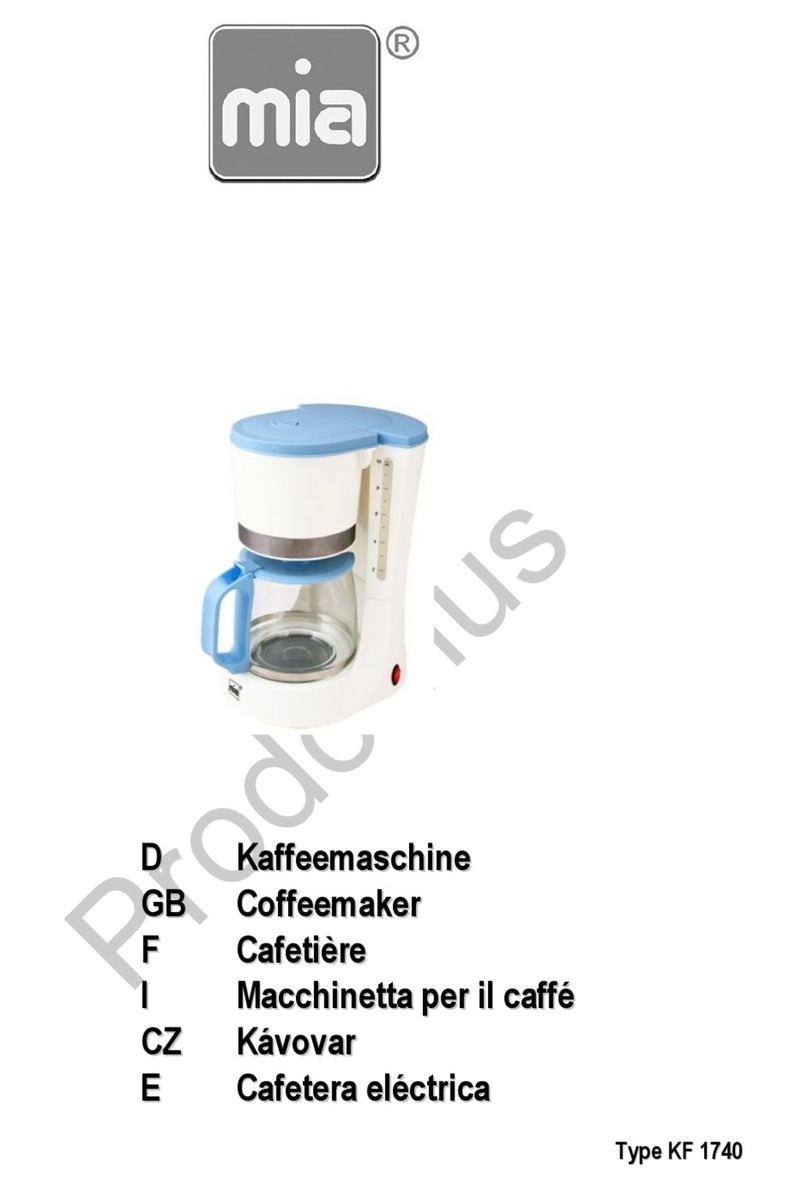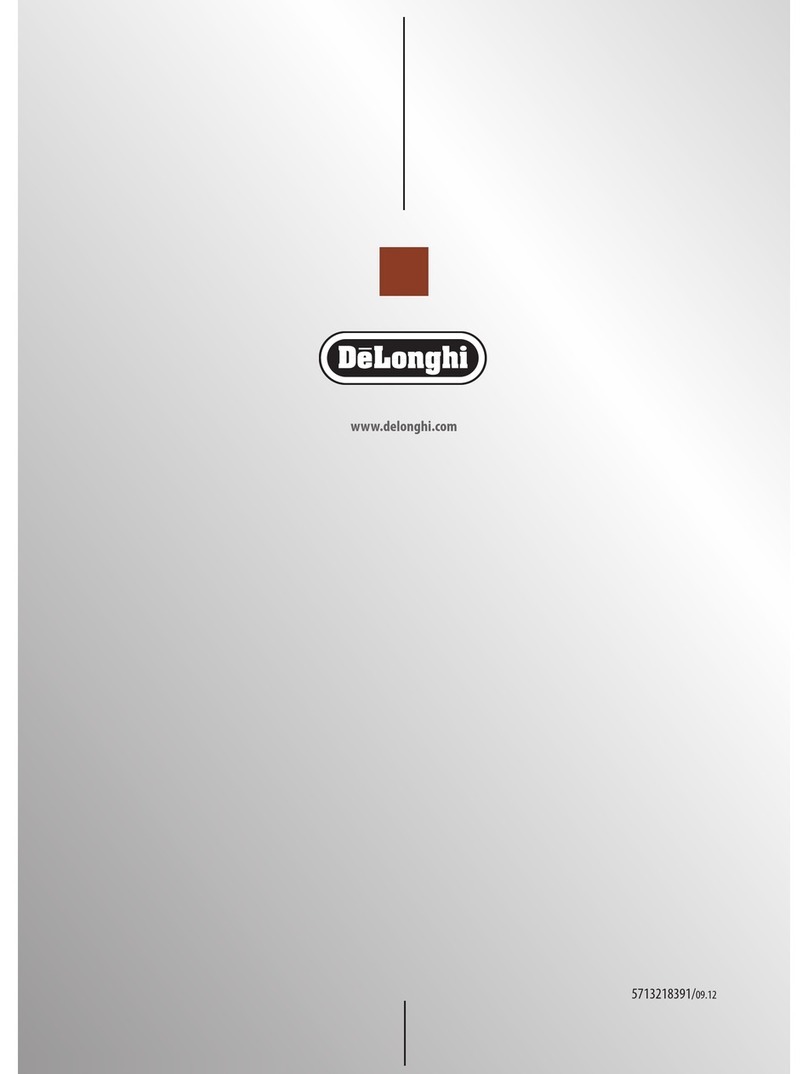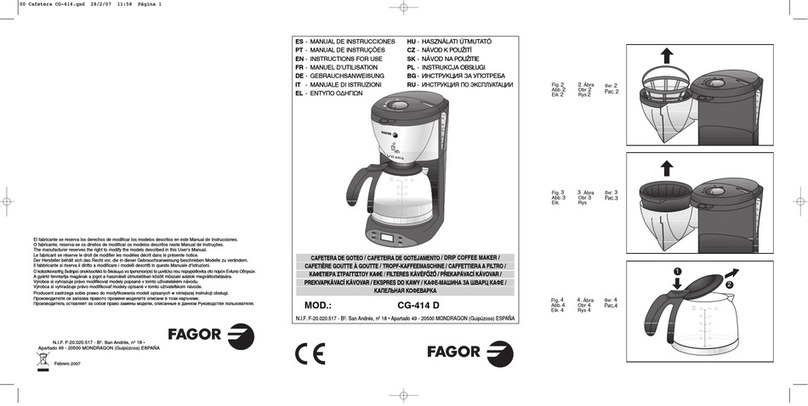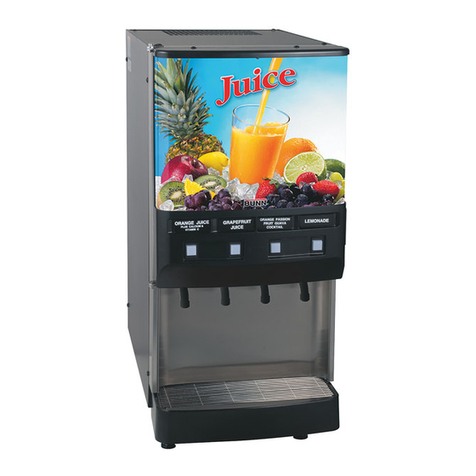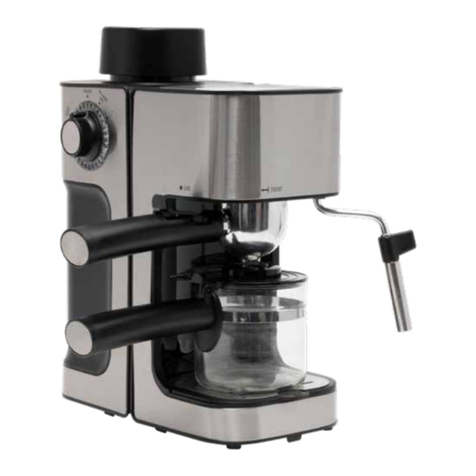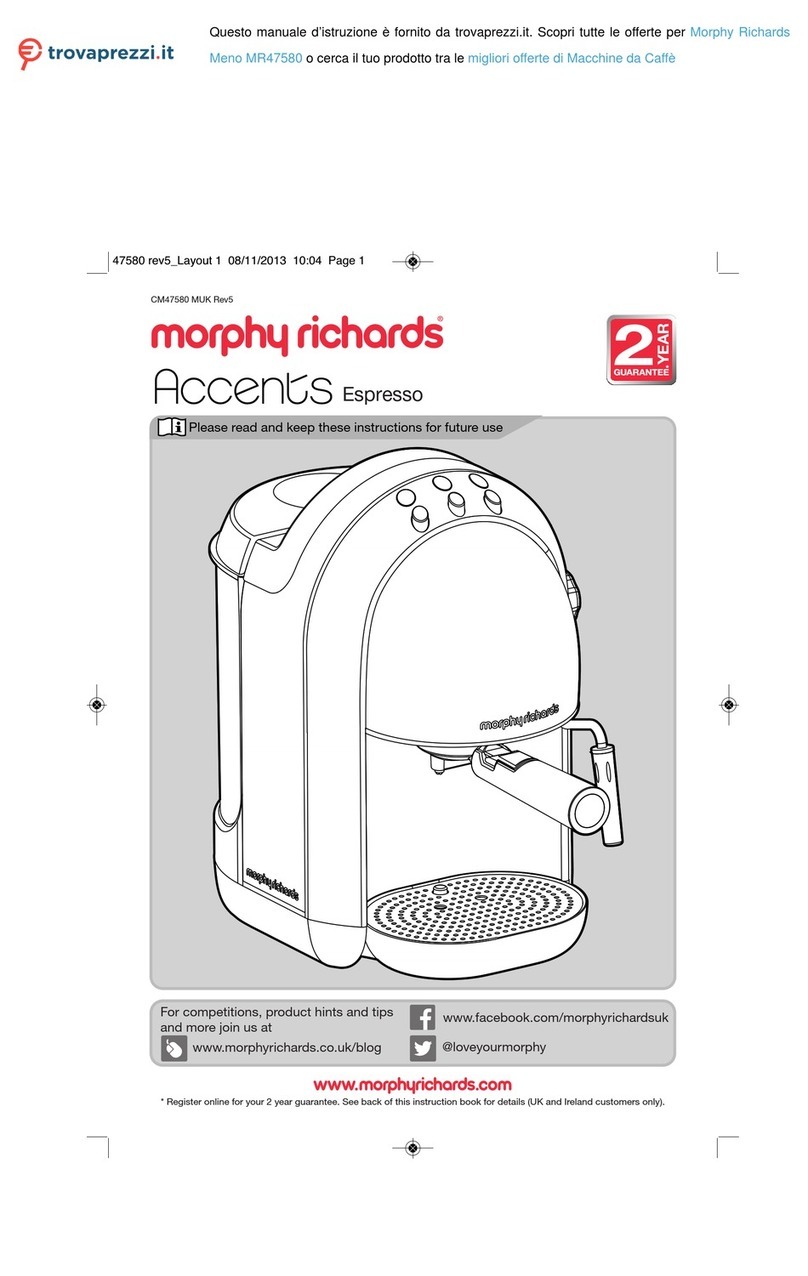ISTRUZIONI PER L’USO:
Prima accensione della macchina:
1. Estrarre la macchina per caffè espresso dalla scatola e rimuovere tutti i sacchetti ed il materiale da imballo.
2. Posizionare la macchina per caffè espresso su una superficie stabile e piana, lontano da fonti di calore e da
rubinetti della rete idrica.
3. Alzare il coperchio (19) del serbatoio posto sulla sommità posteriore della macchina ed estrarre il serbatoio (1)
facendo attenzione a non danneggiare i tubicini al suo interno.
4. Riempire il serbatoio (1) con acqua fredda.
5. Rimettere il serbatoio (1) nella sua sede, controllando che i tubicini non siano piegati e che il filtro posto
all’estremità di uno di essi sia ben saldo, richiudere il coperchio (19).
6. Inserire la spina del cavo di alimentazione elettrica nella presa della corrente (verificarne il voltaggio).
7. Inserire il portafiltro (8) nell’anello di aggancio della sede del portafiltro (5) ruotandolo da sinistra verso
destra, in modo che si scaldi e che sia facilmente pronto per l’uso.
8. Accendere la macchina premendo l’interruttore generale (11). L’accensione della lampada spia dell’interruttore
stesso conferma l’alimentazione elettrica.
9. Aprire la manopola vapore/acqua calda (4).
10. Posizionare l’interruttore erogazione vapore (13) nella posizione acqua calda e alzare l’interruttore pompa
(22).
11. Quando dal beccuccio del tubo erogatore vapore/acqua calda (6) esce l’acqua, abbassare l’interruttore (22) e
chiudere la manopola vapore/acqua calda (4) e posizionare interruttore (13) su modalità caffè.
12. Dopo aver fatto tutte queste operazioni la macchina si può anche lasciare accesa.
13. Il regolatore di temperatura Termopid (21) visualizzerà i gradi della caldaia stessa, controllando il
riscaldamento.
14. Il regolatore di temperatura e’ impostato dalla fabbrica a 95°C, temperatura ideale per la preparazione del
caffè. (Se si desidera cambiare la temperatura del Termopid, seguire le istruzioni del paragrafo Regolazione
della temperatura in caldaia tramite il controllo Termopid).
Preparazione del caffè espresso con caffè macinato:
15. Controllare che il serbatoio (1) contenga acqua, verificandone il livello dal visualizzatore livello acqua nel
serbatoio (20).
16. Premere l’interruttore generale (11): la lampada spia dell’interruttore stesso si accende (solo se la macchina è
spenta, altrimenti passare al punto successivo). Posizionare l’interruttore (13) nella posizione caffè.
17. Non appena il display del Termopid (21) visualizza la temperatura impostata e la lampada spia pronto caffè
(14) si spegne, la macchina è pronta per l’uso.
18. Inserire il filtro 1 tazza (9) o 2 tazze (10) nel portafiltro (8) preventivamente riscaldato come indicato al punto
7.
19. Tramite la paletta (16) in dotazione, riempire il filtro con il caffè macinato come indicato di seguito:
-1 “paletta” = 1 tazza
-2 “palette” = 2 tazze
ad ogni “paletta di caffè” pressare il contenuto del filtro con l’apposito pressino (15) in dotazione, assicurarsi
che il bordo del portafiltro sia pulito, senza residui di caffè, i quali possono impedire al portafitro di essere
chiuso correttamente, generando perdite.
20. Inserire il portafiltro (8) nell’anello di aggancio della sede del portafiltro (5) ruotandolo da sinistra verso destra
con forza e successivamente posizionare le tazzine sulla grata removibile poggia tazza (7).
21. Alzare l’interruttore pompa (22).
22. Una volta raggiunta la quantità desiderata del caffè abbassare di nuovo l’interruttore (22).
23. Togliere il portafiltro (8) e gettare i fondi di caffè, verificare che sia pulito e reinserirlo nell’anello di aggancio
della sede del porta filtro (5) per mantenere il portafiltro stesso alla giusta temperatura.
Vapore:
24. Controllare che il serbatoio (1) contenga acqua, verificandone il livello dal visualizzatore livello acqua nel
serbatoio (20).
25. Premere l’interruttore generale (11): la lampada spia dell’interruttore stesso si accende (solo se la macchina è
spenta, altrimenti passare al punto successivo).
26. Posizionare l’interruttore (13) nella posizione vapore.
27. La lampada spia (14) e la lampada spia (3) si accendono e non appena la lampada spia pronto vapore (3) si
spegne, la macchina è pronta per erogare vapore nel modo giusto. ATTENZIONE: se si attende troppo e si
spengono entrambe le lampade spie la quantità di vapore erogato sarà meno costante.
28. Aprire la manopola vapore/acqua calda (4). All’inizio uscirà un po’ d’acqua seguita dal vapore.
29. Mettere sotto il tubo vapore erogatore vapore/acqua calda (6) il recipiente con la bevanda desiderata e aprire
la manopola (4).
30. A fine operazione chiudere la manopola vapore/acqua calda (4).

